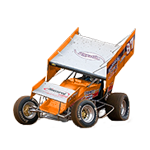 Adobe Community
Adobe Community
- Home
- Illustrator
- Discussions
- Betreff: Imported PDF lines incomplete
- Betreff: Imported PDF lines incomplete
Imported PDF lines incomplete
Copy link to clipboard
Copied
Explore related tutorials & articles
Copy link to clipboard
Copied
Are there many anchor points on that path?
Copy link to clipboard
Copied
No anchor points at all. It was a fresh import from the PDF
Copy link to clipboard
Copied
A path cannot exist without at least 2 anchor points, so I'll assume you didn't understand the question.
I'm not a CAD operator, so my knowledge of it is limited, but I work with a lot of CAD-origin stuff. I see this from time to time, especially in cases where 'perspective' or perhaps other 2D CAD-based render-to-screen techniques have been applied. I suspect that cylindrical effect is borne of such a technique. The underlying, original CAD vectors are "stretched," figuratively speaking. They maintain the effect (and their perceivable integrity) in the native format, but it outside of the CAD environment, they break up as you see. It's possible there are unstroked anchors in those gaps. If you Select All (in Illustrator), you will see them, if they're there.
Otherwise, if you have access to the orginal, native file or the person who built it, there may be other ways to get around it.
Copy link to clipboard
Copied
I'm the original builder and have access to DXF/DWG and any file needed. There seems to be a line weight issue when exporting PDF. Either they are so thick that theres absolutely no detail to be had. Or when you disable line weights, it ends up like what you see in the screen shot. I've done some looking on fusion's forums and apparently this was told to be fixable in the future back in 2016 but never was. I'm currently trying to export the PDF's using another method involving manually chaning the line weights in "TrueView". God only knows if this will work. I was hoping Illustrator could be my savior and automatically connect these alias'ed lines.
Copy link to clipboard
Copied
God only knows if this will work.
Yes, it can be hard to sort out, and trial-and-error will inevitably occur. CAD exort to PDF could vary among applications, so it's a bit of a wildcard. I find that printing to PDF rather than exporting can deliver results much closer to what-you-see-is-what-it-gives. The most reliable app I've found for printing to PDF as a CAD-to-Illustrator bridge is Dassault Systems' eDrawings. There's a free viewer that opens a lot of 2D and 3D formats, and its Print dialog has a useful "Render edges to vector" option. I get a faithful and workable PDF at least 95% of the time.
Copy link to clipboard
Copied
That's great news thank you for your info on this!

